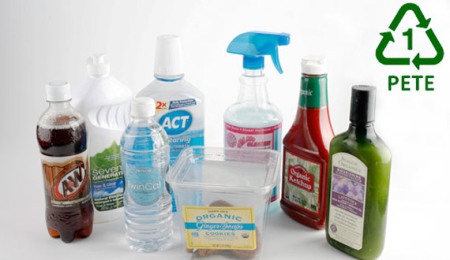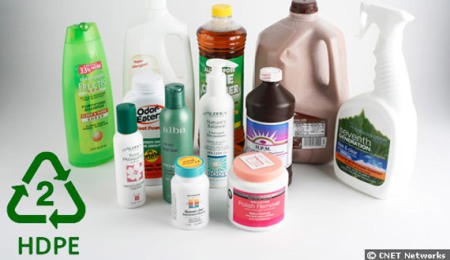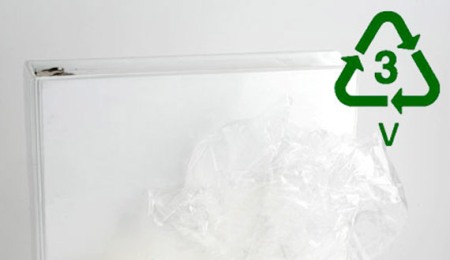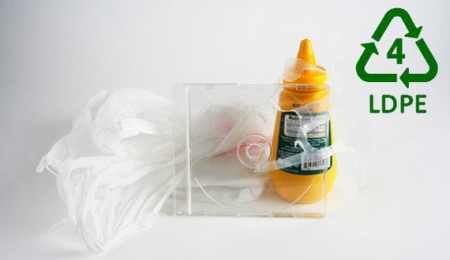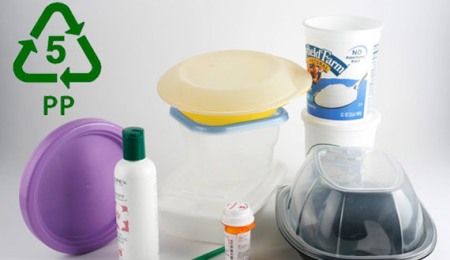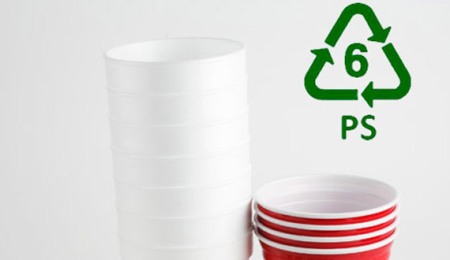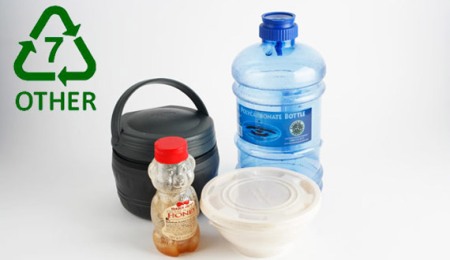1. Polyethylene terephthalate (PET or PETE)
Polyethylene terephthalate (PET or PETE) is one of the most common types of plastic and is commonly found in bottles of soda, juice, water and cough syrup and jars of peanut butter. The bottoms of these containers are usually stamped with the chasing arrows symbol and the number 1, the code for PET.
2. High-density polyethylene (HDPE)
High-density polyethylene, or No. 2 HDPE, is used in shampoo and detergent bottles, milk jugs, cosmetics, motor oil, toys and sturdy shopping bags, and is considered one of the safer plastics. HDPE is often opaque or cloudy. Some recycling centres can only handle clear No. 2 plastics, such as milk jugs, but not colored bottles. As rule of thumb, bottles, jars, and jugs are most likely to be collected for recycling, particularly those labelled 1 or 2. Tubs, lids, spray pumps, buckets, films, bags and items containing toxic chemicals such as drain cleaner, are less likely to be accepted by recyclers.
3. Polyvinyl chloride (PVC)
Polyvinyl chloride, or No. 3 PVC, is found in shower curtains, meat and cheese wrappers, ring binders, some bottles, plumbing pipes and building materials. Commonly called vinyl, PVC and closely related PVDC differ from other vinyls, which lack the toxic chloride. PVC continues to be used in many toys.
4. Low-density polyethylene (LDPE)
Low-density polyethylene, or No. 4 LDPE, is used in shopping bags, six-pack rings, hard drive casings, CD and DVD cases and some bottles. Unlike PVC, LDPE isn’t regarded as a ‘bad’ plastic by most eco watchdogs. Potentially toxic industrial chemicals involved in its manufacture, however, include butane, benzene and vinyl acetate.
5. Polypropylene (PP)
Polypropylene, or PP, is used in the products in this photograph as well as in nappies, pails, dishes, candy containers and lab equipment. The purple product pictured here is made from recycled polypropylene from Recycline. Makers of electronics packaging, including Microsoft, are increasingly using the recycled material instead of toxic PVC.
6. Polystyrene, or Styrofoam
Polystyrene, also known as Styrofoam, is used in disposable cups and take-out food containers, packing peanuts, trays and egg cartons. Most fast-food chains, including McDonald’s, phased out polystyrene for sandwich containers more than 20 years ago. Ozone layer-depleting CFCs haven’t been used to make Polystyrene since the late 1980s.
7. ‘Wild card’
The No. 7 SPI code is generally a wild card marking plastics that don’t fall within the other six categories. These include polycarbonate bottles, which are understood by scientists to wreak havoc on human hormones by leaching bisphenol-A into hot beverages. As a result, polycarbonate baby bottles are losing favour with the public, and retailers including Toys ‘R Us are starting to sell more BPA-free bottles.

